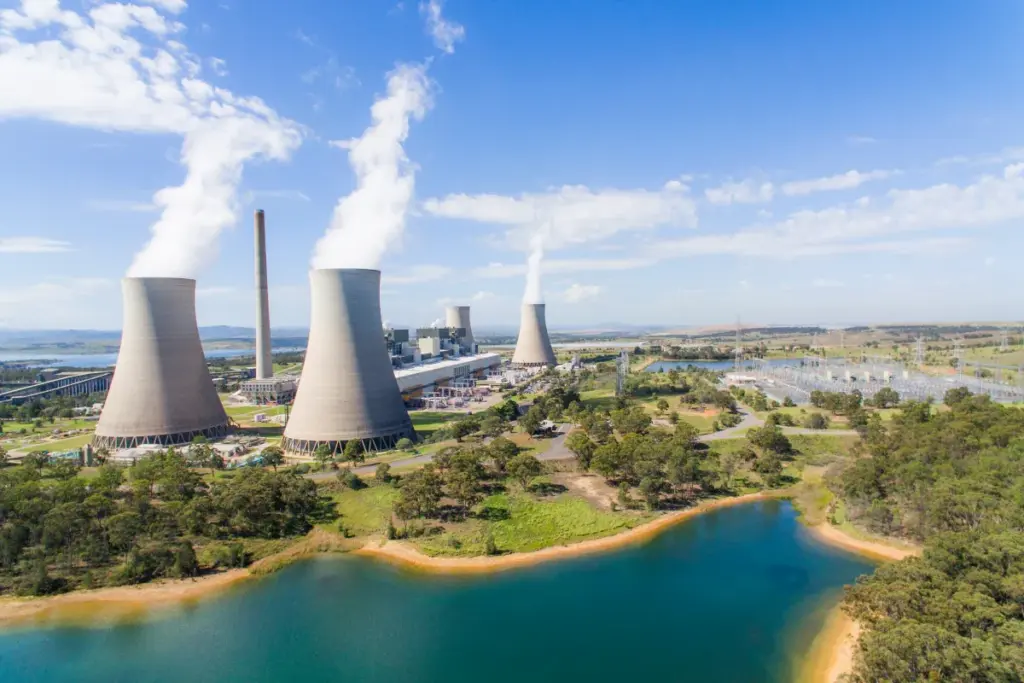
AGL Energy, Australia’s largest coal-fired electricity supplier, is considering mothballing or closing some of its coal generator units to make room for renewable energy sources, including solar and wind. This move comes as AGL hints at a potential new wind contract, which could be announced soon, marking a significant shift in the company’s energy strategy.
The announcement comes amid growing criticism directed at AGL and the other major energy providers, Origin Energy and EnergyAustralia, for their slow transition to renewable energy. These companies are under pressure to fill the anticipated gap left by the planned closures of coal power plants in the coming years. Origin Energy, for instance, plans to close its Eraring coal generator by August 2027, while EnergyAustralia is set to close Yallourn in 2028.
Transitioning from Coal to Renewables
AGL’s current trajectory suggests that it could still rely on coal for two-thirds of its energy generation in the early 2030s, even as the federal government aims for 82% renewable energy by 2030. The company’s Bayswater plant in New South Wales is scheduled to close by 2033, and Loy Yang A in Victoria by 2035.
In a recent interview on the Energy Insiders podcast, AGL CEO Damien Nicks discussed the future of these plants, comparing it to the phased closure of the Liddell plant, which was completed in April 2023. “I think you’re going to see mothballing,” Nicks stated. “You’re going to see us potentially do two-shifting in time. We’re going to run the units very, very differently, and we’ll continue to flex those units as well.”
“We’ve spent money on the Bayswater power station, and quite a lot of it over a period of time. We can now flex that power station down to 80%.” — Damien Nicks, AGL CEO
Innovative Energy Management
The concept of “two-shifting” involves temporarily shutting down a unit when demand is low, such as over weekends. This strategy allows more renewable energy to enter the market during peak solar production times. “It’s still early days, but you might, as an example, shut the power station on a Friday and bring it back up on a Monday morning,” Nicks explained.
AGL’s immediate challenge is navigating its upcoming annual general meeting and addressing shareholder concerns, including those from Mike Cannon-Brookes’ Grok Investments, regarding its Climate Transition Action Plan (CTAP). Critics argue that the CTAP does not significantly advance coal retirement timelines, despite the operational tweaks mentioned.
Investing in Battery Storage
AGL, like its competitors, is heavily investing in battery storage as part of its strategy to support renewable energy and protect earnings. Nicks highlighted the construction of the 500 MW, 1,000 MWh Liddell battery and the larger Tomago battery, which will be twice the size but half the cost per megawatt-hour due to improved battery density.
Additional battery projects are under consideration, including a 500 MW, 2,000 MWh battery in Queensland and a 400 MW, 1,600 MWh battery at the Pottinger renewable energy park in New South Wales. “There is a huge amount of work going on behind the scenes,” Nicks noted, emphasizing the importance of these developments for the future energy market.
Future Energy Landscape
Nicks also mentioned ongoing projects such as the Pottinger wind farm and a potential wind farm in Barn Hill, South Australia. “Let’s watch this space,” he said, regarding potential wind farm power purchase agreements (PPAs).
The CTAP aims to balance energy supply and capacity, with a focus on battery storage. “The reason we’ve focused on batteries this time around our results is because that’s what’s right in front of us right now,” Nicks said, acknowledging the ongoing challenges of integrating wind energy into the grid.
Customer-Centric Energy Solutions
AGL is also exploring new business models to cater to customers with solar panels, household batteries, and electric vehicles, supported by federal rebates. The company aims to leverage consumer energy resources and smart technologies to manage energy loads effectively.
“At home, it’s going to have a solar battery, EV, hot water, and so forth. That is where the value of a future customer will come from.” — Damien Nicks, AGL CEO
Nicks emphasized the importance of technology in this transition, citing investments in platforms like Kaluza to manage energy loads and enhance grid stability. AGL’s offer of three hours of free power during the day in South Australia has already encouraged customers to shift energy use to peak solar production times, benefiting the grid.
The energy landscape is evolving rapidly, and AGL’s strategic shift towards renewables and battery storage reflects broader industry trends. As the company navigates these changes, its ability to balance shareholder expectations, regulatory requirements, and consumer needs will be crucial in shaping Australia’s energy future.





